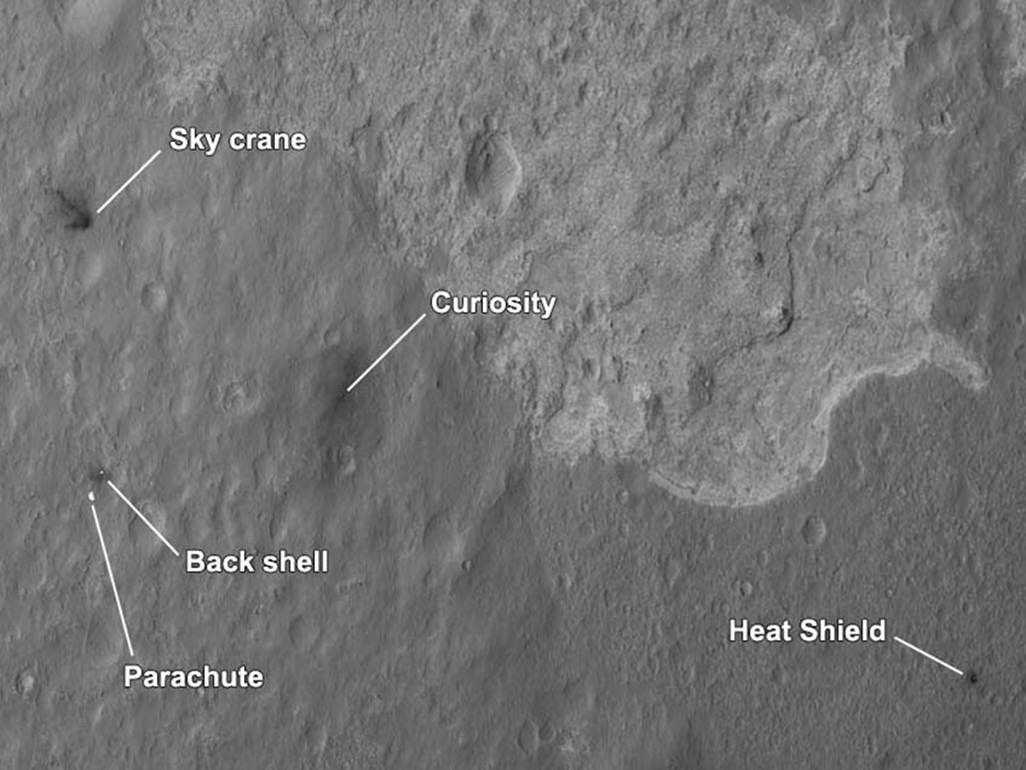More awesomeness from HiRISE! A new orbital image shows the Curiosity rover sitting on Mars' surface, along with all the accoutrements needed to get it there safely: the heat shield, backshell, parachute, and the Sky Crane. The High-Resolution Imaging Science Experiment (HiRISE) camera captured this image just 24 hours after MSL's landing.
"This is like the crime scene photo here," HiRISE team member Sarah Milkovich said during a press conference on Aug. 7.
Of course, yesterday the HiRISE team revealed
they had captured MSL in the act of landing.
In re-inacting the scene of the crime, er… incredible landing, the heat shield, lower right, was the first piece to hit the ground, followed by the back shell attached to the parachute, then the rover itself touched down. Then, and finally, after cables were cut, the sky crane flew away to the northwest and crashed. The heat shield is about 1,220 meters (4,000 feet) from Curiosity, the backshell and parachute are about 610 meters (2,000 feet) away from the rover, and the Sky Crane is about 620 meters (2,100 feet) away.
The relatively dark areas in all four spots are from disturbances of the bright surface dust, revealing darker soil underneath. If you look closely, even visible are the black streaks where the sky crane thrusters kicked up dust. Malkovich said scientists have looked at the streak patterns to verify Curiosity's orientation -- which confirms the information from the rover's first pictures from surface.
Close-up of Curiosity sitting on Mars' surface. Credit: NASA/JPL/University of Arizona
The darkened radial jets from the sky crane are downrange from the point of oblique impact, much like the oblique impacts of asteroids. In fact, NASA said, they make an arrow pointing to Curiosity.
Close-up of the Sky Crane. Credit: NASA/JPL/University of Arizona
HiRISE's image of MSL's landing site shows the rover and the hardware doing their jobs exactly as they were designed to do.
The image was acquired from a special 41-degree roll of MRO, larger than the normal 30-degree limit. It rolled towards the west and towards the Sun, which increases visible scattering by atmospheric dust as well as the amount of atmosphere the orbiter has to look through, thereby reducing the contrast of surface features. Malkovich said that future images taken from a higher angle will show the hardware in greater detail.
Close-up of the parachute and backshell. Credit: NASA/JPL/University of Arizona
Close-up of the heat shield. Credit: NASA/JPL/University of Arizona
See larger versions and additional info at the HiRISE website.
 Universe Today
Universe Today
